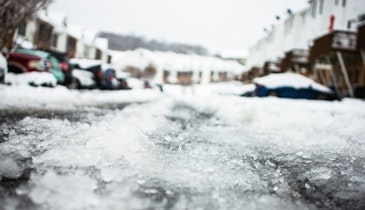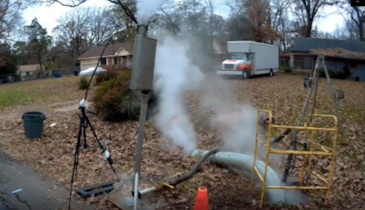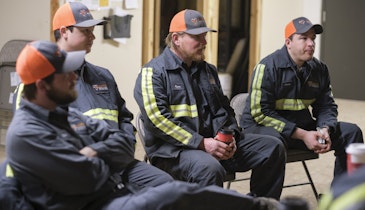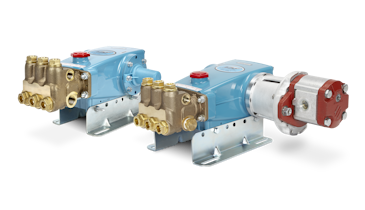Interested in Drilling?
Get Drilling articles, news and videos right in your inbox! Sign up now.
Drilling + Get AlertsThe growth in horizontal directional drilling and vacuum excavator usage, combined with more stringent regulations concerning used drilling fluids disposal, can lead to increased cost of fluid management. Hard costs and labor expenses for handling drilling fluids and slurry can now significantly impact a contractor’s operation. And challenges like lack of approved dump sites, traffic and Department of Transportation restrictions are creating a logistical nightmare for many contractors. For these reasons, contractors need to weigh their options for handling used drilling fluids and potholing slurry.
Pump-and-dump
According to Adam Bates, product manager at Vermeer, most utility contractors today use vacuum excavators for suctioning used HDD drilling fluids and for potholing. The slurry is then hauled off and dumped at an approved disposal site.
“The problems with the ‘pump-and-dump’ practice arise when disposal sites stop taking liquid material,” Bates says. “Fewer sites result in contractors paying a lot more per gallon of disposal and spending more time on the road going to and from dump sites. In turn, HDD crews are left waiting for vacs to get back to the site. Fluid disposal challenges can slow down entire operations.”
To address these issues, many contractors are investing in larger truck-mounted vacuum excavators to help reduce the number of dump cycles they need to make on a project.
“Using the right-sized vac is certainly a great place for contractors to start, but there are other options contractors should consider based on the size of the project, location and disposal costs,” added Bates. “Options will vary depending on whether a contractor is locating existing utilities (potholing) or supporting a drilling crew.”
Utility locating fluid disposal options
Larger slurry tank capacities can help keep a vac on the job longer, but localized separation and solidification are a couple of other alternatives that should be explored.
Localized separation
Potholing crews face a unique set of challenges in the utility industry because of DOT restrictions. The amount of work that crews can perform in a day is dependent on the amount of water they can transport to the job and the weight of the slurry that must later be hauled off. With a traditional vacuum excavator, freshwater and used slurry are stored in separate tanks, which adds to the overall weight of these systems.
Vermeer recently introduced a new concept for vacuum excavators that uses the same storage tanks for freshwater and used dirty water while separating solid material to help with weight management. The new Vermeer XR2 vacuum excavator looks a lot like a traditional vacuum excavator, but on the job site it works more like an HDD reclaimer.
“Excavated material is fed through an onboard deceleration tank that exits through an airlock onto a shaker deck where solids and liquids are then separated,” Bates says. “The solid material is off-loaded by a conveyer at the back of the machine and used slurry water is pumped into one of the four XR2 holding tanks. Since the vacuum excavator is only transporting dirty water this design helps allow crews to dig more holes per trip than traditional vacuum excavators and is a great option for high-volume utility potholing, stitch boring, slot trenching and certain general construction applications.”
Solidification
To solidify potholing slurry, a super absorbent polymer (SAP) mixture is used to pull the water out of the mud so that the material can be stored, transported and disposed of as a solid. Slurry mixed with the SAP mixture creates a semisolid material that can be loaded into a truck or roll-off dumpster and then transported and disposed of at traditional landfills. Alternatively, some composting facilities may be interested in receiving the material to help maintain the moisture content of their products.
“Solidification is a great option for utility contractors who have several projects happening in a centralized area, where there are not many dump sites nearby and/or dump fees are high,” Bates says.
HDD disposal options
To dispose of used drilling slurry, large-capacity trailer vacs are an excellent option for utility contractors who perform small-diameter bores in ideal soil conditions with disposal sites nearby. When the proximity of disposal sites is an issue or when several HDD crews are working near one another, solidification is an option to consider. If large volumes of drilling fluids are being used, then it could be time to consider a reclaimer.
The recycling of used drilling fluids is becoming more and more common in the industry.
“Contractors installing large-diameter pipelines were among the early adopters of recycling drilling fluids,” Bates says. “However, reclaimers are becoming a more viable solution on many other types of projects, too. Contractors working in rock need to use higher volumes of fluid to flush shavings from the hole and optimize tooling performance. There are also many smaller-diameter shots happening at longer distances. In situations like this, bringing in a reclaimer may be the most economical way of handling drilling fluids. It reduces the amount of water needed for the job and the amount of used fluids that have to be disposed of. It can also help keep crews working all day long since they aren’t waiting on vacs to get back to the site.”
He says that contractors should think of reclaimers and the new XR2 vacuum excavator in a similar way.
“Both of these systems are designed to separate solids from liquids for a particular application. The XR2 works well for potholing because it’s able to separate solids from the water before it has had adequate time to combine and become mud or slurry. On HDD job sites, since the fluid being pumped down the hole is already a slurry, this process requires a reclaimer. However, both options are great for providing localized material separation.”
As the trenchless industry continues to evolve and grow, fluid management and disposal will continue to be an essential part of running a business. Today, there are many more tools for handling used fluids. Be sure to consider all options and choose the most appropriate solution for the application.
For more information about fluid management solutions, visit your local Vermeer dealer or go to vermeer.com.






